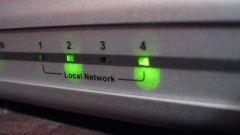Instruction
1
In Mozilla FireFox open menu section "Tools" and select "Settings". In the settings window go to the "Advanced" tab and click "Customize" in section "Connections". In the window of connection settings check the box next to the label "No proxy".
2
In Internet Explorer open menu "Tools" and click "Internet options". Go to the Connections tab of the properties window of the browser and click the "network setup". Uncheck the box next to "Automatically detect settings", and labelled "Use a proxy server for your LAN" check mark. Click "OK" in both open Windows.
3
In Opera open the browser menu, go to "Settings" and open the section "Quick settings". The same can be done by pressing the keyboard function key F12. By a left click on "Enable proxy server", uncheck this item. In this browser there is a possibility to disable the use proxy for all sites, and only some of them. To use it press CTRL + F12 and go to the "Advanced" tab. Click in the left pane, the string "Network" and then click "Proxy servers". In the "do Not use proxy for addresses", enter the ' exception site and click the "OK"button.
4
Google Chrome has its own settings to use a proxy server. If you open the web browser menu, select "Settings" and then go to a page "Advanced", section "Network" you will find a button that says "Change settings of the proxy server. However, clicking this button will open the settings window, another browser - Internet Explorer. If you do in IE any changes to the settings of the proxy server, they will affect Google Chrome.
5
Browser Apple Safari, as Google Chrome has its own settings for proxy servers, and uses the installed Internet Explorer. Here is the settings window of IE opens up after you open the Safari menu section edit", select "setup", switch to tab "add-Ons" and click "Edit settings" labelled "Proxy".







